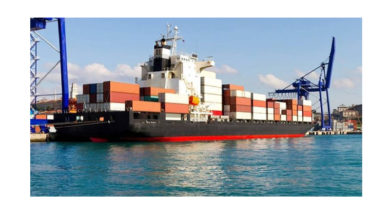The Road To Future
Xerox has always been strong on developing new technology and many of today’s essential business tools such as the computer mouse, liquid toner and even the ubiquitous photo copier have their origins in Xerox research facilities. Yet change is in the air. The worldwide shift to digital technologies has brought with it fearsome competition and even giants like Xerox, IBM and Microsoft have to think hard about their future and plan strategies for survival.
The Xerox approach has been similar to IBM; a major focus is now directed to offering business services with a strong overseeing management element built in. To support this strategy, some very high profile acquisitions have been made along with the divesting of several once important business units. This strategy differs from the likes of HP who sees its future in technology such as Latex ink based printers.
What will become of Xerox in 10 years time?
Hard to tell, but one way of getting some idea is to ask Andrew Horne, Xerox Emirates General Manager and John Paul Teti responsible for Developing Markets Operations at Xerox MEA.
 Andrew Horne joined Xerox Emirates in February 2013, Horne sees the UAE as a rather distinctive and somewhat unique market: “UAE enjoys a truly international environment with over 150 nationalities living and working here. In Xerox emirates we have employees from 21 different countries, a very positive aspect of UAE and business wise it’s a very safe and ethical environment.”
Andrew Horne joined Xerox Emirates in February 2013, Horne sees the UAE as a rather distinctive and somewhat unique market: “UAE enjoys a truly international environment with over 150 nationalities living and working here. In Xerox emirates we have employees from 21 different countries, a very positive aspect of UAE and business wise it’s a very safe and ethical environment.”
He explains:” Xerox Emirates is organised into 3 lines of business: The technology business, production and the post-sale business and there is a perception gap between what we do today and how we used to be. Many people in this region are not fully aware of our activities and services and the technology behind it. This is something that we are addressing by raising brand awareness using a combination of differing activities that include leveraging social media to carry our message.”
This awareness gap is closing and companies and organisation are increasingly interested in Xerox managed Print Services (MPS). Horne says: “We have a number of high profile clients including Dubai World Trade Centre. By using our services it has been able to reduce costs and wastage while increasing their productivity and control over what is being printed and who is printing it. Less devices are now being used and these are more economically friendly.” He pointed out how Dubai World Trade Centre now has hands on control: “MPS provides management reports showing what has been printed and where.”
Other benefits clients adopting MPS gain include saving of up to 30% on wastage through pages that shouldn’t have been printed and sheets damaged or jammed, and of course, pages being printed that are not related to the office work.
Horne is keen to point out: “It is important to understand that within framework of MPS we see a document as an item that contains data and so it’s not necessarily physical. Once MPS is implemented customers have more control over their offline operation something that is just the tip of the iceberg of what is possible.”
Xerox first rolled out MPS some years ago in New York and London and notable successes have been achieved. If MPS actually helps customers to reduce the number of printers through promoting MPS services is Xerox killing its own copier market? Horne believes that in today’s business environment, customers’ requirement have changed. He acknowledges: “There is no question that number of pages printed during next decade is going to be reduced significantly, but it’s never going to be paperless office though.”
Securing the data
To be fair though copying is not quite the issue today. The office environment hasn’t changed much during the last decade, however what has changed is the way people work. He agrees and adds: “People work at home, work while commuting, and work during travel. Basically everyone is now able to work on the move.” This calls for a company to provide a secure environment for people to access the data and work wherever they are. A Chief Information Officer (CIO) has to be able to ask a basic question – where is the data? 30% of the time can be spent looking for a document they may never find. Horne thinks it is here MPS strengths lay.
 He says:” MPS solves this problem and helps people to be more productive. With MPS, technology is not forgotten. Yes it’s true that we spend less money on developing technology but now we are investing more to make devices smarter and more integrated into the working environment. For example we have a product called Connect Key. This is fundamentally a platform which enables a user interface to be flexible and personalised in its connectivity yet still meet the needs of an organisation.”
He says:” MPS solves this problem and helps people to be more productive. With MPS, technology is not forgotten. Yes it’s true that we spend less money on developing technology but now we are investing more to make devices smarter and more integrated into the working environment. For example we have a product called Connect Key. This is fundamentally a platform which enables a user interface to be flexible and personalised in its connectivity yet still meet the needs of an organisation.”
The benefits are considerable: In health care the way connectivity can be structured vertically to speed up access to important patient data is a huge plus. Xerox sees other benefits too in the new platforms on which the software runs.
Horne explains: “There has also been a huge improvement in the mechanics of our equipment, analogue copiers used to have 200 moving parts. Today a digital device which is often 100 times more complex probably has 20 moving parts.”
Xerox products in the office is only one aspect of its future. Many commercial offset printers in the region also use Xerox production printers. Litho printers may by default have a different mindset, and this can mean a quite different sales and marketing approach. While acknowledging this Horne says.” commercial printers have to make money from what goes through devices. They want speed, they want versatility, and they want shorter print runs. Also our workflow (called FreeFlow) easily integrates into an offset printing environment for Xerox has an excellent understanding of conventional printers requirements. Today 40% of Xerox revenue comes from MPS, 25% from production printing and 15% from services. The balance is from other service line ups such as paper and non- contracted break fix. There is no doubt Production Printing is an important part of our revenue stream,” Horne claims.
Investing and divesting
When it comes to investing and divesting it seems that Xerox is going through a roller coaster ride. Xerox acquired Impika last year. The French inkjet printing systems manufacturer specialises in aqueous-based systems ideal for transactional and publishing output. Xerox is also buying privately-held ISG Holdings for $225 million as it strengthens its payment services unit for clients in the insurance sector, while a sell off was 3D Systems buying Xerox’s solid inks business. The company chose to sell its paper division in US and Europe, but in emerging markets Xerox is still actively selling paper in volume and Xerox is highly involved in healthcare projects to the military. Some of these projects border on science fiction. An example – Xerox has signed on to help researchers at the University of Michigan design the roads and intersections of tomorrow.
Some may find it difficult to get a clear idea of where Xerox is heading yet JP Teti sees this as a strength. ”We are constantly rationalising and selling technologies off that are not mainstream to us. We have forged a partnership with 3D systems for many of today’s 3D printing systems are underpinned by Xerox technologies and patents.
Teti makes a good point when he points out how few realise the depth of Xerox technology. He believes: “Xerox is still one of the most important technology companies in the world though of course we don’t develop technology just for the sake of it. No matter how amazing technology can be it doesn’t change the world, it is people who change the world.”
Teti adds, “Our technologies have helped people and companies work more efficiently and we invest in the technologies that we believe fit nicely into our high end portfolio and Impika is an example. We are also offering a large format printing (LFP) device that uses Memjet technology. These products complement our graphic arts range and eventually they will be launched in Middle East. We are actively promoting these products and our product manager is travelling to Dubai to organise workshops and training programs. What differentiates our LFP solution from others is the intelligence we put in the front end. The crucial element in a successful LFP operation is how efficiently you handle and process the data.”
How financially solid is Xerox?
Rather strong it appears; Xerox stock is up 45% over last year and according to JP Teti the company is increasing its dividends to its shareholders. However Chief Executive and Chairman Ursula M. Burns recently sold 300,000 Xerox shares for $3,599,790, a move that raised some eyebrows. Nevertheless it seems that for Xerox the path to future is a combination of many things, more involvement in service, smarter devices and being part of futuristic projects.





